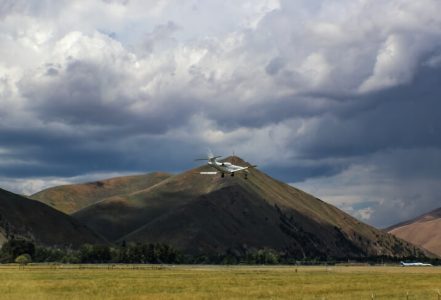Contact Approach Procedures
A contact approach is a procedure available to aircraft operating on an IFR flight plan. It allows pilots to deviate from the published instrument approach procedure and proceed visually to the destination airport while maintaining contact with the surface.
The difference between a contact approach and a visual approach lies in the visual references required. During a visual approach, the pilot must maintain sight of the airport or preceding aircraft. In contrast, a contact approach necessitates visual contact with the ground. Experienced pilots may see this distinction as significant.
Before initiating a contact approach, several requirements must be met:
- Maintain visual clearance from clouds
- Ensure a minimum of 1 statute mile visibility
- Confirm the airport has a published instrument approach
- Have a reasonable expectation to continue to the airport under prevailing conditions
Contact Approach Risks
Pilots often face challenges with contact approaches, especially when transitioning from instrument to visual reference. These approaches allow pilots to land without relying on instrument procedures when familiar landmarks like a restaurant with a large sign, a water tower, or other permanent structures.
However, the risks of a contact approach become apparent if a pilot loses situational awareness near the airport. The absence of a defined missed approach procedure poses a significant challenge. ATC cannot initiate or suggest a contact approach; it must be specifically requested by the pilot.
Help Avoid the Risks
While training and preparation for contact approaches are the most important ways to ensure they are performed safely, here are some tips to keep in mind:
- Assess Weather Conditions:
Ensure minimum visibility requirements are met and weather conditions are conducive for a contact approach.
- Request Clearance from ATC:
Communicate with Air Traffic Control (ATC) to request clearance for a contact approach, specifying your location and intentions.
- Maintain Visual Reference:
Keep visual contact with the ground and landmarks as per the conditions for a contact approach.
- Confirm Position and Heading:
Verify your position and heading relative to the airport and intended runway using navigation aids.
- Acknowledge ATC Clearance:
Confirm receipt of ATC clearance for the contact approach, ensuring you understand all instructions.
- Monitor Terrain and Obstacles:
Continuously scan for terrain and obstacles, maintaining situational awareness throughout the approach.
- Follow ATC Instructions:
Adhere strictly to any additional instructions provided by ATC, such as altitude adjustments or route changes.
- Maintain Communication:
Keep an open line of communication with ATC, providing updates on your approach status as needed.
- Manage Aircraft Speed and Configuration:
Adjust your aircraft’s speed and configuration for a safe approach and landing, including flaps and landing gear deployment.
- Identify Visual Landmarks:
Use known visual landmarks to guide your approach towards the airport and runway.
- Prepare for Missed Approach:
Have a missed approach procedure ready in case visual references are lost or conditions deteriorate.
- Complete Landing Procedures:
Once visual with the runway, complete normal landing procedures, maintaining alignment and descent profile.
- Clear Active Runway:
After landing, clear the active runway promptly and follow ground control instructions to your parking spot.
- Post-Landing Checklist:
Perform post-landing checks to ensure all systems are secure and the aircraft is safely parked.
There are scenarios where a contact approach may be suitable, such as flying into the sun or transitioning from cloud cover to clear conditions at a safe altitude. In all cases, use caution. Carefully evaluate the conditions and consider the potential risks of deviating from standard instrument procedures.
RELATED READING
RELATED CTS TRAINING









